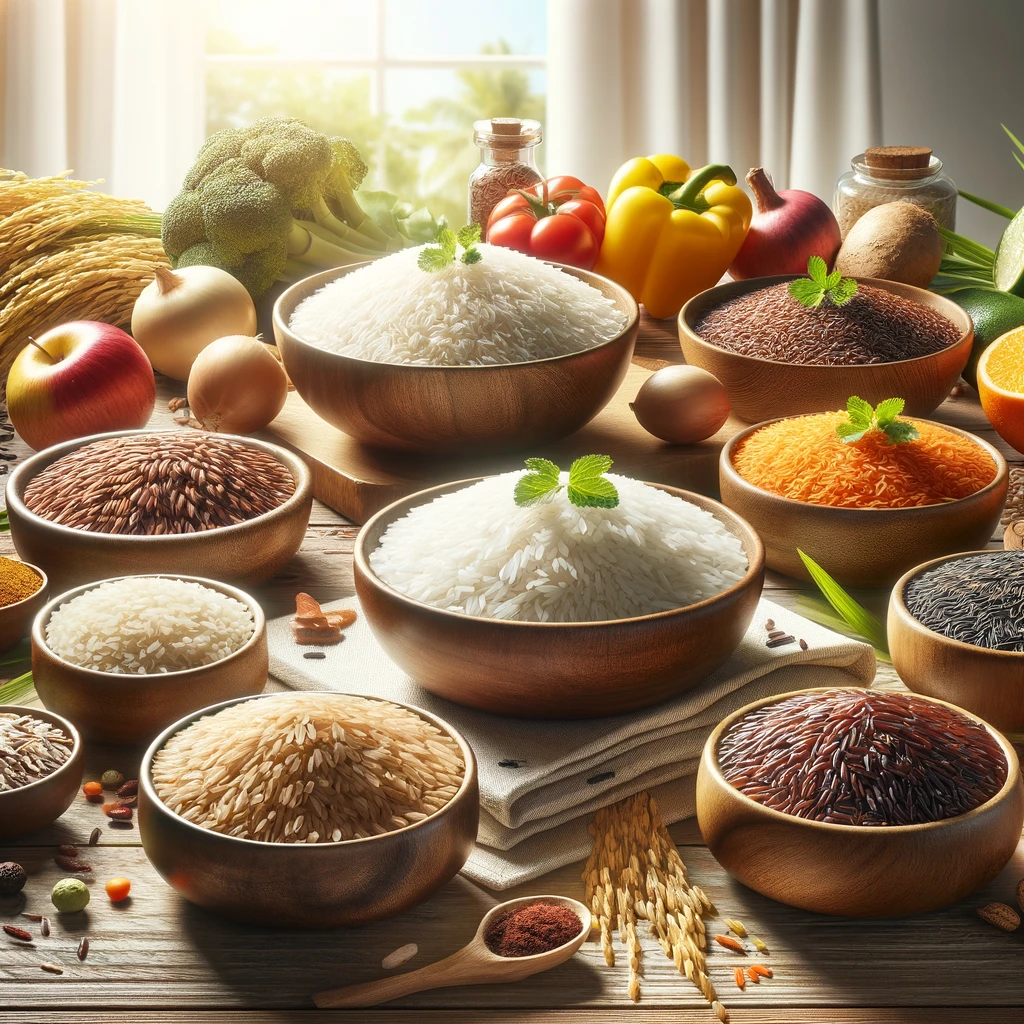How many calories are in rice? There are many different types of rice grown and served throughout the world, so it’s difficult to determine what the standard for calories in rice is. However, the average serving of rice, which is 1 cup, has about 200 calories but may have more depending on the variety of rice.
How Many Calories in Rice – Nutrition Facts

Rice is a diverse and essential staple, available in numerous varieties for human consumption. Globally, it ranks as the third most vital crop, integral to various ethnic cuisines across cultures.
Thriving in tropical or humid climates, rice cultivation is prolific, and a single serving can include thousands of grains—ponder the immense quantity consumed over a lifetime!
Popular types include white rice, brown rice, basmati, and wild rice, each with distinct nutritional profiles affecting calorie content. For example, a cup of cooked long-grain white rice typically contains 206 calories, whereas the same amount of brown rice, slightly heavier at about 7 ounces, has around 216 calories. This caloric difference is due to brown rice’s higher fiber and vitamin content, which not only promotes a feeling of fullness but also aids in reducing overall calorie intake.
Basmati rice, predominantly cultivated in India, contains about 260 calories per cooked cup, reflecting its larger grain size compared to white rice. Conversely, wild rice has a lower calorie count, about 160 calories per cooked cup, making it a lighter option.
Calorie counts can vary based on cooking methods. If rice is cooked with additives like salt, butter, oil, or broth, the caloric and nutritional values will increase. Similarly, precooked or instant rice might differ nutritionally from its traditionally cooked counterparts.
On average, any rice serving is estimated to contain about 250 calories, fitting well within a balanced meal of 500-600 calories—leaving ample space for vegetables and proteins.
Including rice in your diet offers versatility and low-calorie options that complement many dishes. Its ease of preparation and delicious taste make it a favored choice in many households. Additionally, rice’s low-fat content helps maintain a healthy diet, while its ability to blend with a variety of foods—from savory curries to sweet desserts—enhances its appeal as a dietary staple around the world.
Health Benefits of Rice

Carbohydrates are a fundamental part of a balanced diet, providing the energy our bodies need to function throughout the day. Rice, as a source of these vital carbs, stands out for its gentleness on the digestive system compared to harder-to-digest grains like crusty bread.
When you eat rice, your body converts its carbohydrates into glucose, serving as fuel much like gasoline powers a car. This process ensures that your body keeps running efficiently, utilizing the energy released from rice effectively.
Rich in essential nutrients, rice offers a variety of vitamins and minerals. It contains B vitamins, Vitamin D, manganese, and iron, all of which are crucial for maintaining daily health. These components help fortify your diet, making rice not just a source of carbs but a nutritional powerhouse.
Rice is naturally low in calories, which makes it an excellent choice for maintaining a healthy weight. It doesn’t contribute to fat buildup, assuming it’s consumed in reasonable portions.
Among the array of rice types, each offers unique benefits. Brown rice, for instance, is particularly beneficial for those with diabetes because it has a lower glycemic index and helps regulate blood sugar levels. Its high fiber content supports digestive health and assists in weight management efforts. Moreover, the nutrients in brown rice may offer neuroprotective benefits, potentially guarding against disorders such as Alzheimer’s disease by maintaining cognitive function.
Beyond its health benefits, rice is also valued for its affordability and accessibility. It’s a satisfying staple that keeps you feeling full without the need to overeat, making it a smart choice for those looking to manage their portion sizes effectively.
Rice is not only a versatile and easy-to-cook ingredient but also a crucial component of a nutritious diet. It pairs well with a multitude of dishes, enhancing meals with its subtle flavor and nutritional benefits, making it a beloved food in various cultures worldwide.
Rice Side Dishes

Rice, while a crucial component of many diets, rarely claims the spotlight as a main dish. Instead, it complements proteins perfectly, shining in a variety of side dishes.
Many recipes celebrate rice in its simplest form—lightly seasoned but largely unadorned. Dishes like rice pilaf, coconut rice, and various aromatic kinds of rice such as cilantro lime or lemon pepper rice require just a sprinkle of herbs, a dash of seasoning, and maybe a splash of juice to enhance their natural flavors.
However, some recipes transform rice into the star of the show. Think of Spanish rice, fried rice, risotto, or a hearty broccoli and cheese casserole. These dishes mix rice with a rich array of other ingredients like vegetables and cheeses, infusing it with complex flavors that can steal the show from traditional main courses. In fact, when ordering from a Chinese restaurant, many of us anticipate the rice as eagerly as the entrees of chicken, pork, or shrimp.
Rice also pairs excellently with beans or peas, creating dishes that are not only delicious but also capable of feeding large crowds. For an extra touch of flavor, try cooking the rice in chicken or vegetable stock and seasoning it well to complement the legumes. Whether mixed together or served side by side, rice and beans offer a satisfying meal sure to please any palate.
Sources:

